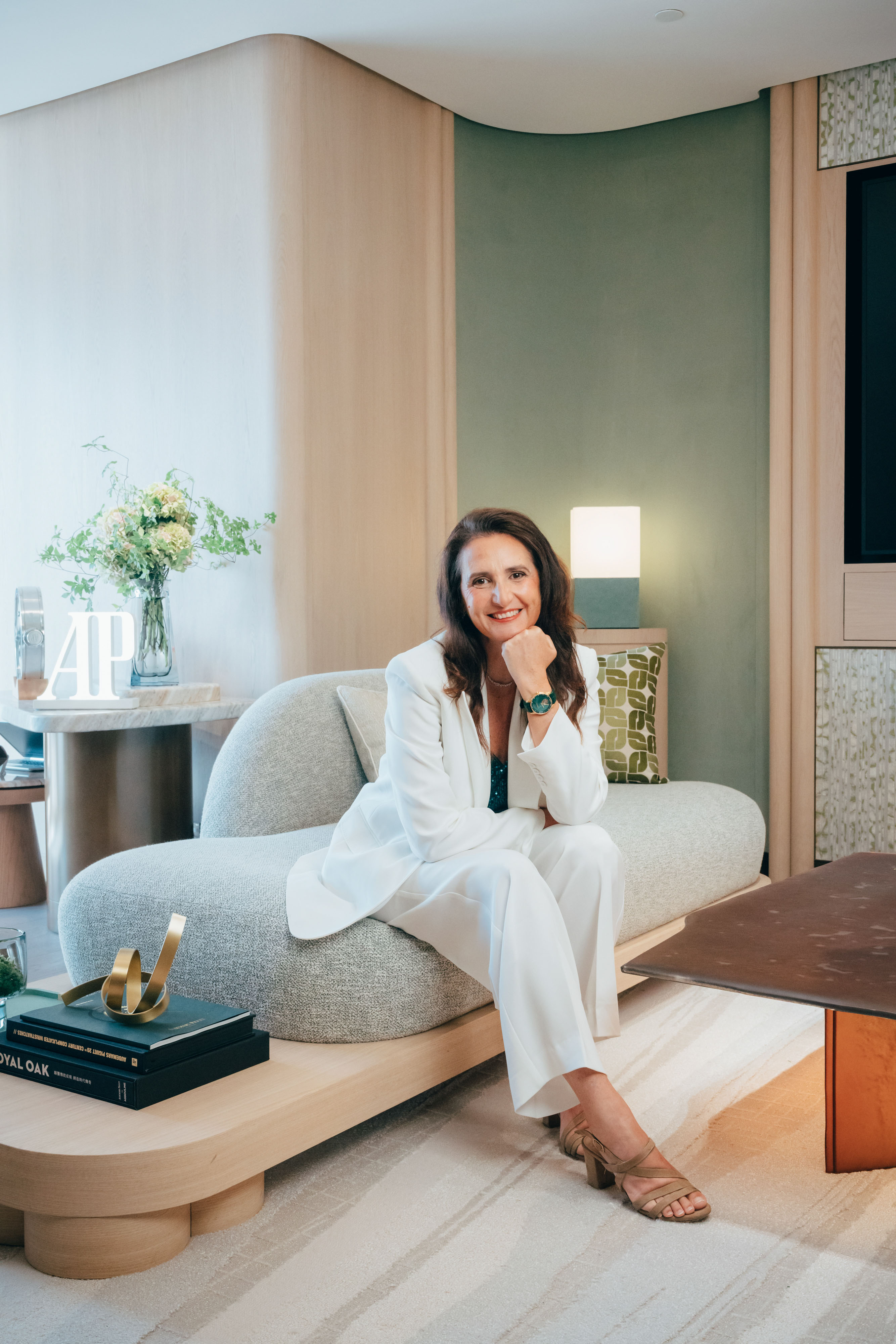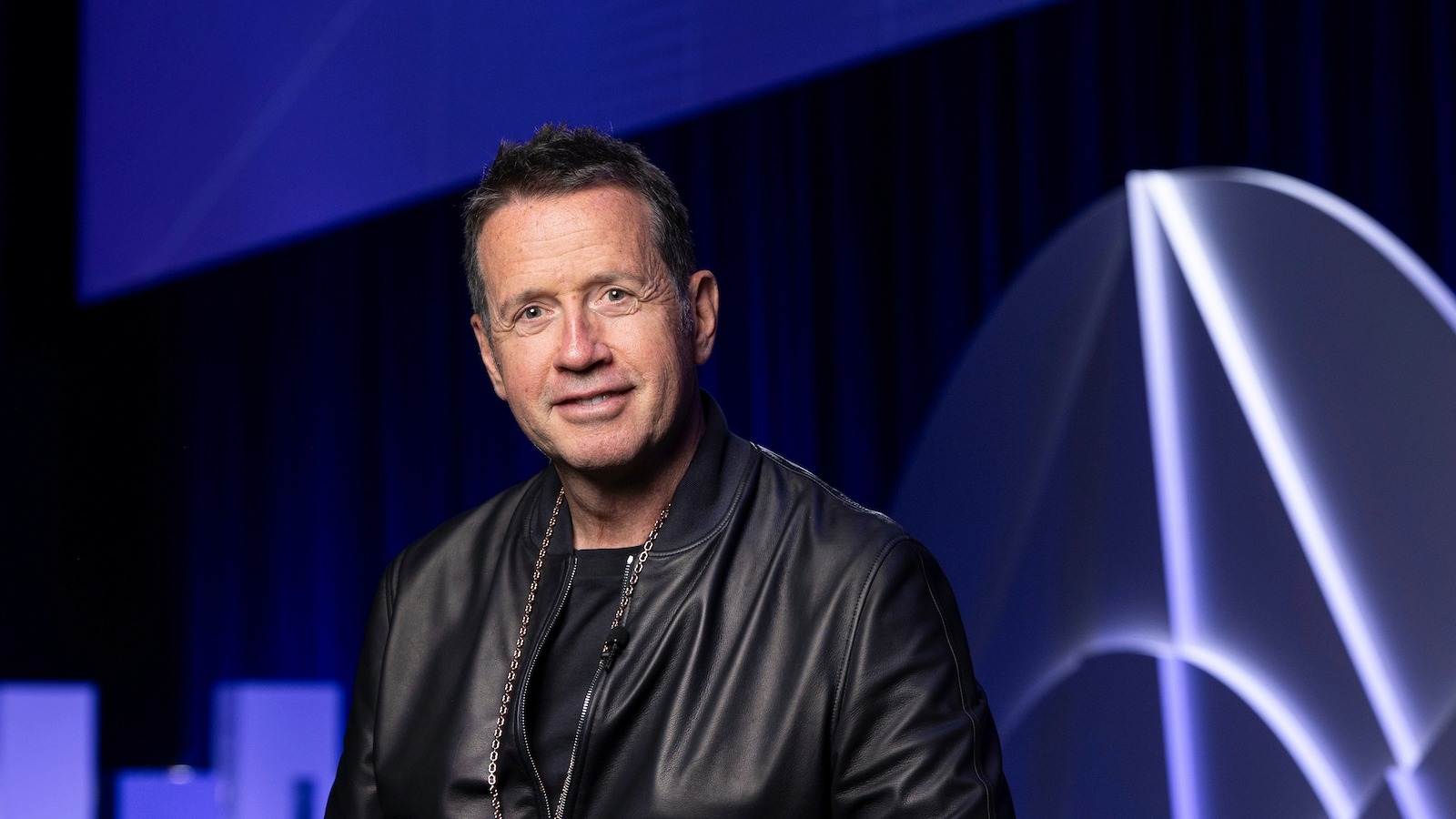Steven Grotell, CEO of Poetic Time, wonders why luxury goods brands are using mathematical formulas to develop what ultimately must be emotional products

Steven Grotell, CEO of Poetic Time, wonders why luxury goods brands are using mathematical formulas to develop what ultimately must be emotional products
Steven Grotell, CEO of Poetic Time, wonders why luxury goods brands are using mathematical formulas to develop what ultimately must be emotional products.
“The sausage makers don’t really like people to know how the sausages are made,” laughs Steven Grotell, in reference to the secrecy that envelops the Swiss watchmaking industry. "For the past twenty years I have been designing and developing products – timepieces and fine jewellery – for some of the world’s most important brands, luxury retailers and designers. But I have always worked very quietly in the background.
“Two years ago I decided to launch my own business. The global luxury narrative had grown so loud, so diffused, with so much white noise. I truly felt that the timing was perfect to bolt out of the boardroom. I wanted to move to a much quieter place, where the notion of uniqueness and rarity could be explored and expressed, without the limitations or inhibitions that come with the financial pressures and competition at the root of all the noise.”
The place, which Steven speaks so passionately about, has manifested itself in the form of his Poetic Time atelier in New York, where he designs one-of-a-kind high-jewellery timepieces for women. Based on a bid to challenge the very notion of uniqueness and luxury without limitation or inhibition, his handcrafted products – produced in Geneva, without logo or branding – bring together the industries most talented and noted artisans.
“ The global luxury narrative had grown so loud and so diffused, I truly felt that the timing was perfect to bolt out of the boardroom ”
Steven’s evolution as a designer began in the study of architecture and design theory, where he holds degrees in both architecture and industrial design from Pratt Institute and later studied jewellery design at the Fashion Institute of Technology in New York. His foray into horlogerie came almost as an accident, working as an architect, when a luxury brand designer offered him the opportunity to design a timepiece collection to accompany the launch of a store. “I left architecture on Friday and moved to Geneva on Sunday,” deadpans Steven.
His near twenty years behind the scenes of the world’s biggest timepiece brands has had clear impact on his ethos. He likens large conglomerates to ocean liners: “they always require a lot of open ocean in order to change course.” And speaks as if their persistent pursuit of profits threatens to undermine the entire industry’s raison d’être.
“Product development is very often nowadays driven by rooms filled with MBA’s,” he explains. “MBA’s trying to find some kind of mathematically based formula for developing what ultimately needs to be an emotionally based product. And whilst there is a certain amount of genius behind that thinking, in my mind, it was an impossible formula, counterintuitive to what I believe constitutes the meaning of luxury.”

L – Blue Magnolia, Platinum watch with hand sculpted magnolia leaves set with diamonds and cabochon sapphires
R – Sweet Petunia, Platinum watch featuring hummingbirds and petunia flowers in hand cut buff top rubies, sapphires, emeralds and black spinel
“I also really feel that you should be able to recognise a product based on the way it is made. That was the impetus behind turning my back on the logo as a concept or a brand and instead looking to design signatures. It’s about product design as the hero and the woman that wears it as the hero and that is the position I am trying to achieve.”
“In today’s marketplace, the consumer has countless choices and every offering from every brand competes for a voice in that marketplace. So for me, it’s not so much about competing with specific brands, but instead challenging the relationship between art and craft differently to any other manufacturer.”
Steven’s first collection debuted in late 2011, as 25 one-of-a-kind pieces, identifiable via three discreetly placed graphic hallmark stamps, addressing the brand’s core values of art and technology, craftsmanship, rarity and nature’s beauty. It took Steven over one year to design and engineer each piece, and one further year to have the collection handcrafted in Geneva, each with Frederic Piguet quartz movement.
“ Product development is often driven by rooms filled with MBA’s trying to find a mathematically based formula for developing what needs to be an emotionally based product ”
Retailing as thus far been restricted to By Appointment viewings in his New York atelier, though there are plans to exhibit in China later this year.
“While I don’t necessarily feel pressure to reach out to the Chinese consumer, I am definitely eager and excited,” explains Steven. “The Asian consumer, I think specifically those outside of Hong Kong, continue to really grow and evolve at a deft pace. What was a demand for purely intrinsic value is slowly melding with an understanding and appreciation of design and uniqueness and artisanal value.”
He is similarly eager and excited about the opportunities the digital world presents to his brand, and confesses to spending hours trawling Pinterest, Instagram and websites like TheCools.com “looking for trends, threads, aspirations and sociologically based points of view that help fine-tune my antenna.”
“I am very intrigued by the idea of digital communications,” he continues. “I think it is largely fuelled by my quest to demystify the magnificent. Luxury and quality are things that need to be communicated in a very special way, with a very special voice, with a very special vocabulary. Even though my products retail from say $40,000 to $340,000, I still think there is a place for these products in this digital community.”

L – Lily Pond Princess, Platinum watch with tapered baguette diamond lily pads floating on a pave diamond field
R – Of Time and Vine, Undulating hand carved platinum vines and leaves diamond set on onyx base plate
“When I started this business I was advised by a very well regarded public relations and marketing group not to develop a website or a digital presence. I very much understood and respected their position conceptually, but eventually it just wasn’t in keeping with where the world of luxury is at this moment. Despite the cost of my work and its intrinsic value, its not something that should remain unlooked at or unspoken about.”
It becomes clear that, for Steven, the medium will never eclipse the message, which in his case, is one of passion, rarity, quality, creativity and innovation. “For me sometimes, the most interesting sounds are ones that only the dogs can hear,” he smiles. “Because that’s where the beauty is, in the details.”
For the moment he will continue to concentrate on retailing from his atelier in New York, focusing on one-of-a-kind and bespoke creations, drawing upon the talents of the finest jewellery and timepiece artisans all over the world.
“I love talking about my work to people, the process, the artisans,” he concedes. “I really feel very strongly about the idea of demystifying the magnificent, communicating the story, the emotion, the process, the positioning.”
“I also think that my clients love and respect the idea that they are buying something from an artist or artisan, who is expending their effort and their creativity especially for them. That they are entering into a personal relationship with the designer and artisan alike. That they are buying something that is truly one-of-a-kind. And that it is the woman who wears the work that remains the hero and becomes her own brand.”
To further investigate independent luxury brands on Luxury Society, we invite your to explore the related materials as follows:
– Middle East Meets West: Lama el Moatassem, Toujouri
– Pierre Dubois, CEO & Founder, Pierre DeRoche
– A True Marriage of Luxury & Sustainability: Tammy Frazer, Frazer Parfums










